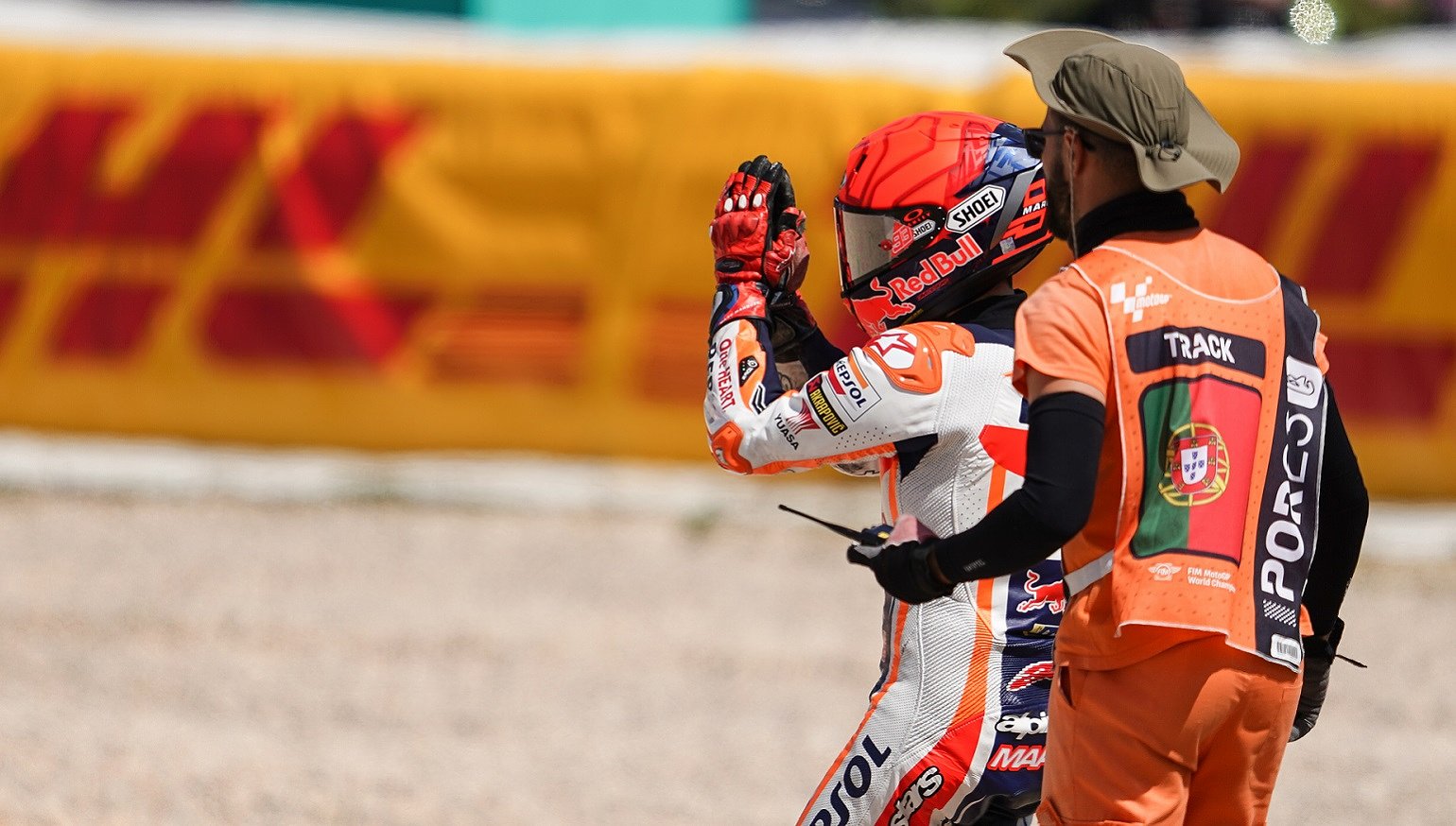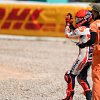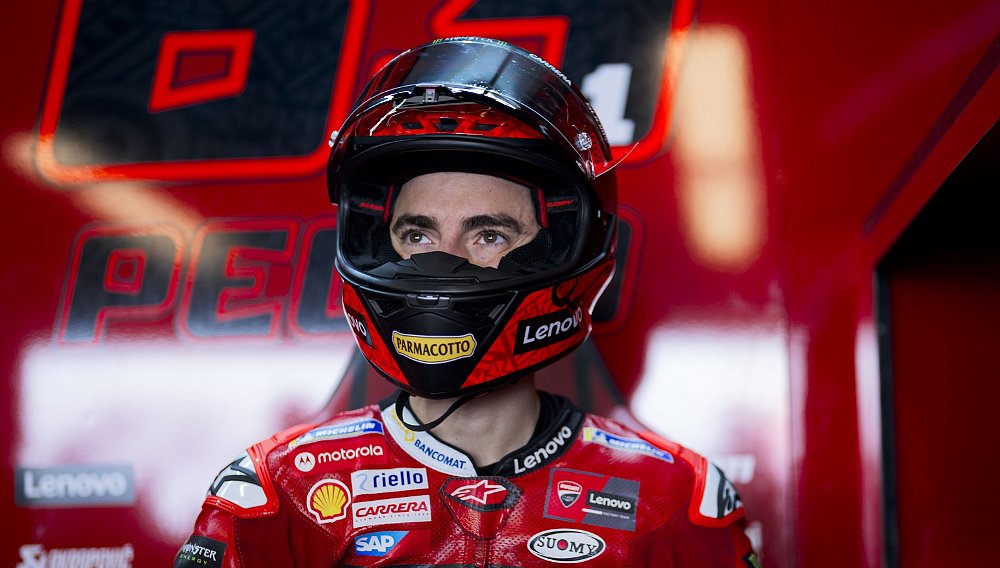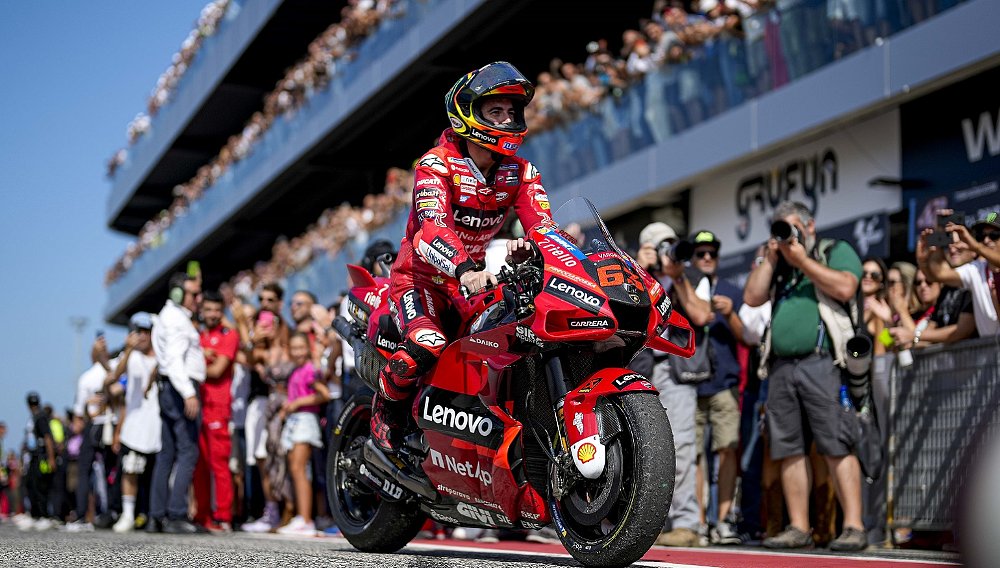Just one round into the longest MotoGP season in history, injuries have already knocked 18.2% of the field out of the second round in Argentina. We can only hope that rate doesn't continue or by mid-season the championship will consist of replacement riders racing against a few regulars limping back from the recovery wards and physical therapy sessions.
While there was some good racing at the opening Grande Prémio TISSOT de Portugal this past weekend, the cost was high. How much of that was down to bad luck? How much of it had to do with the Algarve circuit? How much of it can be fairly blamed on the new schedule that MotoGP organizer Dorna imposed this year, adding half-length sprint races on Saturday while also expanding the schedule to 21 rounds? The answers are all debatable and being debated.
All of us who follow the sport, and especially the riders who put their lives on the line to compete, better hope the first round was an aberration.
Wow. Oliveira joins Pol Espargaro, Enea Bastianini and Marc Marquez in missing this weekend’s round 2 in Argentina pic.twitter.com/2ohGCWQTBv
— Mat Oxley (@matoxley) March 27, 2023
How four riders left Portugal unfit to race
While some teams, riders, and fans favored the additional action of the 2023 schedule, others had concerns that centered around two areas. First, expanding to calendar to 21 rounds would put a lot of stress on all members of the teams, especially in the many weeks of fly-away races when people are far from their homes and families in Europe. Beyond that, the addition of the sprint races increases the risk level in multiple ways. First, the nature of the half-distance race encourages riders to be more aggressive because there is less time to make moves and it reduces the countervailing factor of having to worry about conserving their tires. Second, the Saturday sprint race replaced a practice session, giving teams less time to find a setup before having to push for a fast lap to get into the Q2 qualifying session. The new schedule increases the pressure throughout the weekend.
Are any of those factors to blame for the crashes and injuries in Portugal? Maybe.
The first and scariest crash was when GASGAS Factory Racing Tech3 rider Pol Espargaró crashed in Friday practice, leaving him with a fractured jaw, fractured vertebrae, and other injuries. Fortunately, it appears he'll recover. Given the way the bike tumbled and could have hit him, it could have been a fatal crash, and a fractured vertebrae always means the rider was a hairline away from a life-altering injury. Some riders blamed the large gravel at Algarve, which they say causes riders and bikes to flip instead of slide. It's also reasonable to argue that Espargaró was pushing harder in that session than he would have under the old schedule because he had less time to set a good lap for qualifying. And with most of the field covered by just one second, riders must take chances to try to get a qualifying position that doesn't leave them mired in the pack.
So did the revised schedule with sprint races contribute to Espargaró's crash and injury? Maybe. Some argued so.
Pol's crash happened because riders were pushing hard for a time on a cooling track at the end of a session that, prior to sprint races, was used for race setup not qualifying mode. https://t.co/CAOXgTzuXe
— Simon Patterson (@denkmit) March 27, 2023
The second crash ocurred in the sprint race itself, when Mooney VR46 Racing Team rider Luca Marini crashed and hit Ducati Lenovo Team's Enea Bastianini. Considered a contender for the title before the season, Bastianini suffered a broken shoulder blade and his chances now have to be considerably diminished. Did the hectic aggression of the sprint race contribute to that crash and injury? How you call it depends on how you see it. (The incident occurs at 1:25 in the highlights video below.)
The third and most controversial injury crash occurred in the early laps of Sunday's full-length race, when Repsol Honda's Marc Márquez locked his front brake, hit Prima Pramac's Jorge Martín and then crashed into hometown favorite Miguel Oliveira of the CryptoDATA RNF MotoGP Team. Márquez will miss Argentina with a broken thumb, Oliveira will miss the race due to serious contusions to his leg. Martín will still race, though he was injured by the impact, too, suffering a broken toe.
As a somewhat embarrassing aside, MotoGP slapped a double-long-lap penalty on Márquez for his boneheaded maneuver, but because the race officials specified the penalty was to be imposed in Argentina, and Márquez won't be racing in Argentina, he won't actually have to serve a penalty. Oops. To his credit, Márquez apologized in person to Oliveira's team, tried to apologize to the angry Portuguese fans, who weren't having it, and took blame for the incident.
Did the Márquez crash have anything to do with the revised 2023 schedule? It's hard for me to say it did, though some think it's a factor.
The rest of the weekend was changed because of the sprint race. And those changes have changed the behaviour of the riders all weekend. https://t.co/ajijhoS3ak
— David Emmett (@motomatters) March 27, 2023
It equally plausible to say the Márquez crash had nothing to do with the revised schedule was was totally due to a simple mistake by Márquez — he said he wasn't even trying to pass Martín when he locked the brake — fueled by desperation to get to the front, knowing his Honda is one of the weaker race bikes in the MotoGP paddock this year. (The incident occurs at 2:30 in the highlights video below.)
So in terms of the expanded schedule of racing causing the weekend's injuries, it's a debatable topic. But it is also still a daunting thought. We have 40 more races to run. At the rate of two riders per race being injured enough to miss a subsequent race, we end up with... well, we end up with a disaster, that's what we end up with. (And that doesn't consider that Espargaró is likely to miss multiple races.)
Dorna better hope Portugal was an aberration, not a sign of things to come, or this will be the longest MotoGP season ever in more ways than one.

 Membership
Membership






